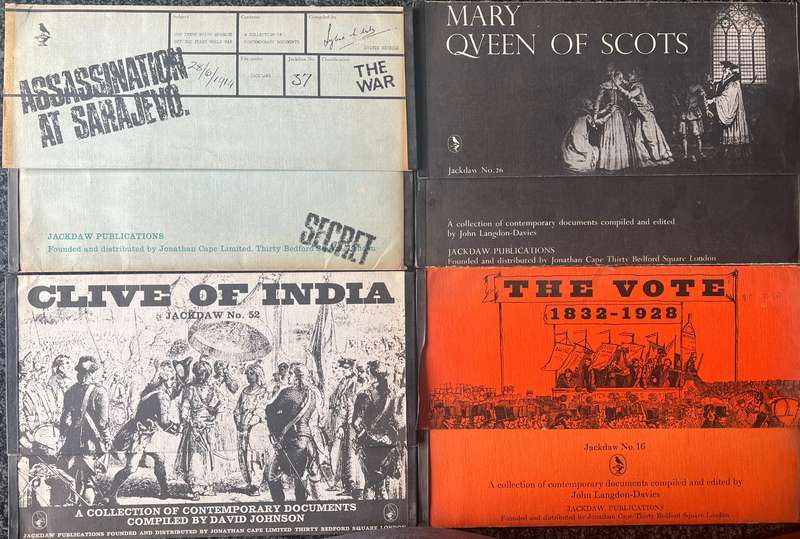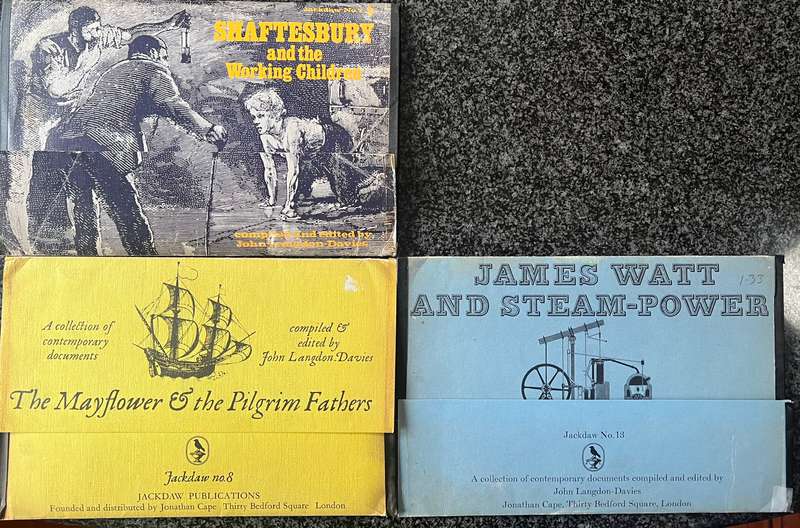



1 x COLLECTION OF 7 JACKDAW PUBLICATIONS, RANGING FROM NO. 7 TO NO. 52
Check my rate
| Main centres: | 1-3 business days |
| Regional areas: | 3-4 business days |
| Remote areas: | 3-5 business days |




| Main centres: | 1-3 business days |
| Regional areas: | 3-4 business days |
| Remote areas: | 3-5 business days |
1 x COLLECTION OF 7 JACKDAW PUBLICATIONS: A COLLECTION OF CONTEMPORARY DOCUMENTS COMPILED AND EDITED BY JOHN LANGDON-DAVIES. RANGING FROM NO. 7 TO NO. 52. FOUNDED AND DISTRIBUTED BY JONATHAN CAPE, LONDON, COMMENCING IN THE 1960s:
1. SHAFTESBURY AND THE WORKING CHILDREN: NO. 7 - Teaching materials on the efforts of Lord Shaftesbury to eliminate child slavery in 19th century England. Uses contemporary engravings, newspaper clippings, and speeches to illustrate the full horror of the world of the working children.
2. THE MAYFLOWER AND THE PILGRIM FATHERS: NO. 8 - The striking contrast between the Pilgrims story as taught in schools and the true-life adventure of persecution, a harrowing voyage, and a desperate struggle to survive will capture your students interest. An Admiralty appraisal of the ship, Mayflower, a suggested list of provisions for the would-be settlers to bring from England, and a contemporary account of the landing in New England provide vivid details.
3. JAMES WATT AND THE STEAM-POWER: NO. 13 - A historical publication that contains facsimile documents, letters, and posters about steam-powered machinery invented by James Watt.
4. THE VOTE 1832 - 1928: NO. 16 - In 1832, Parliament passed a law that changed the British electoral system. It was known as the Great Reform Act, which basically gave the vote to middle class men, leaving working men disappointed. The Reform Act became law in response to years of criticism of the electoral system from those outside and inside Parliament.
5. MARY QUEEN OF SCOTS: NO. 26 - Mary, Queen of Scots (8 December 1542 - 8 February 1587), also known as Mary Stuart or Mary I of Scotland, was Queen of Scotland from 14 December 1542 to 24 July 1567 and Queen consort of France from 10 July 1559 to 5 December 1560.
6. ASSASSINATION AT SARAJEVO: NO. 37 - About the event in Sarajevo which sparked off the First World War.
7. CLIVE OF INDIA: NO. 52 - Discusses Robert Clive's key to success in India, his military strategy, and political acumen through facsimile documents, letters, and posters.

